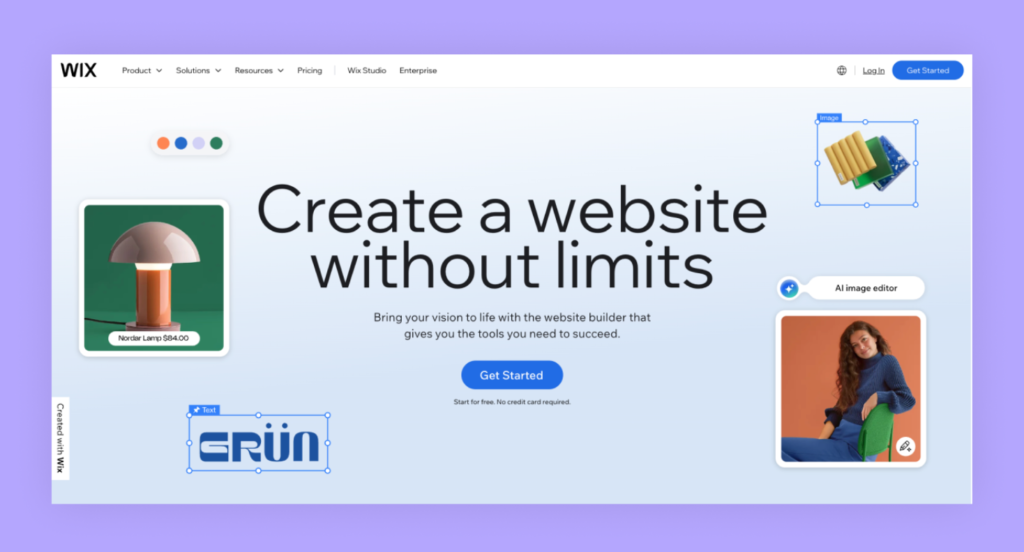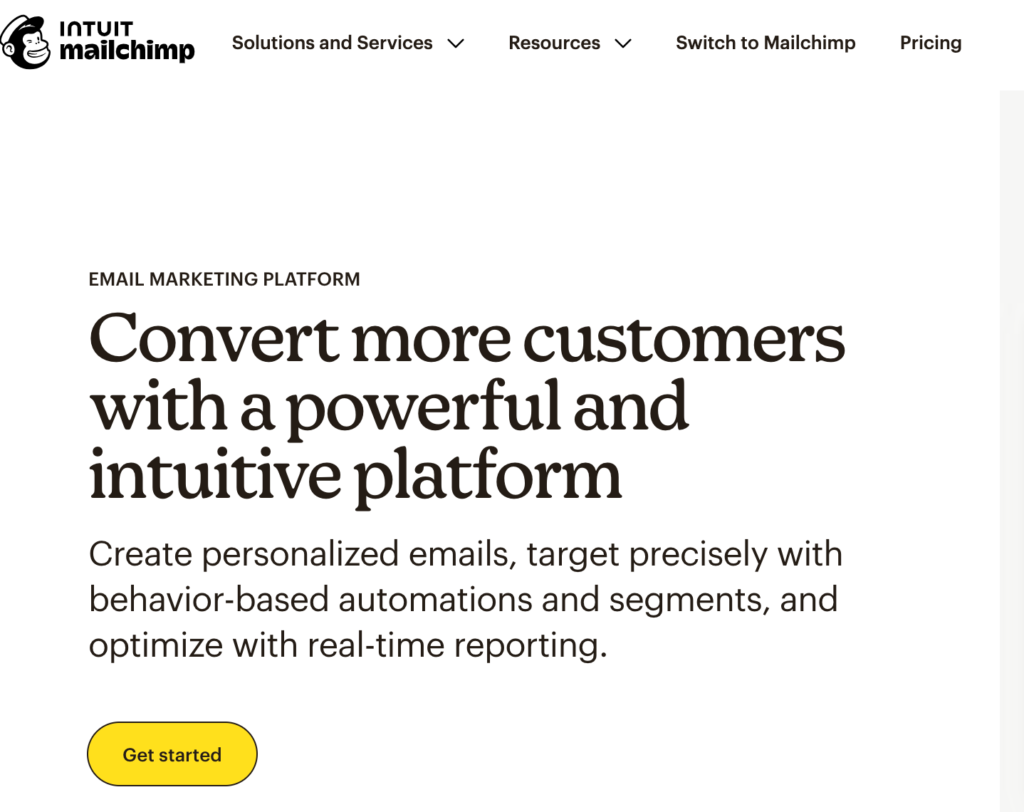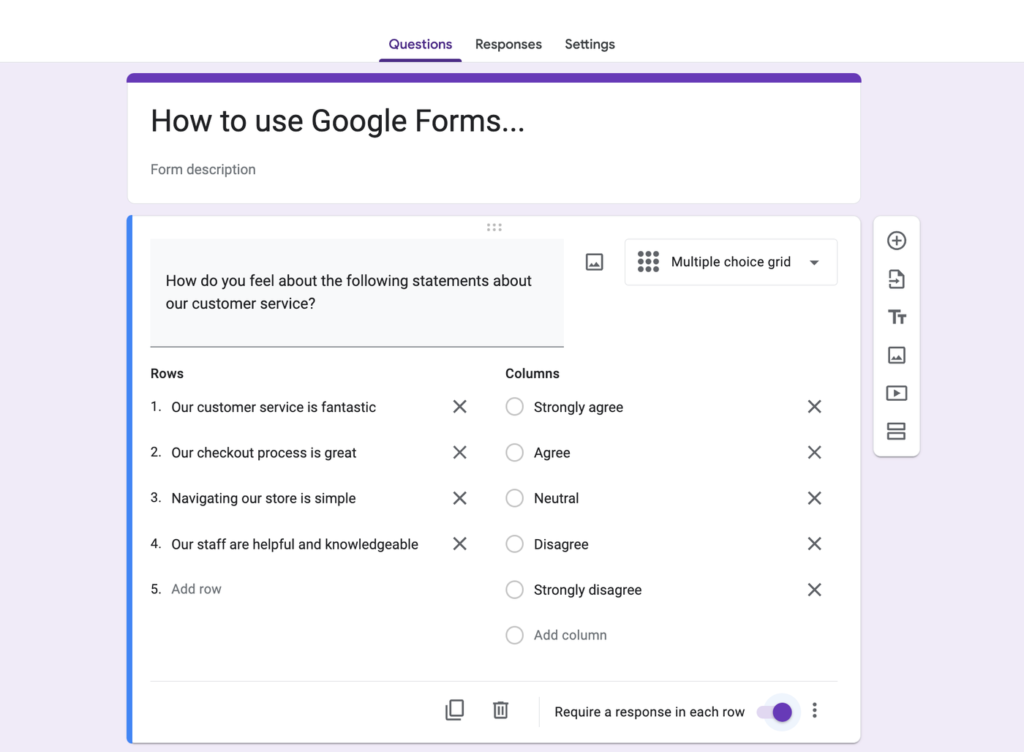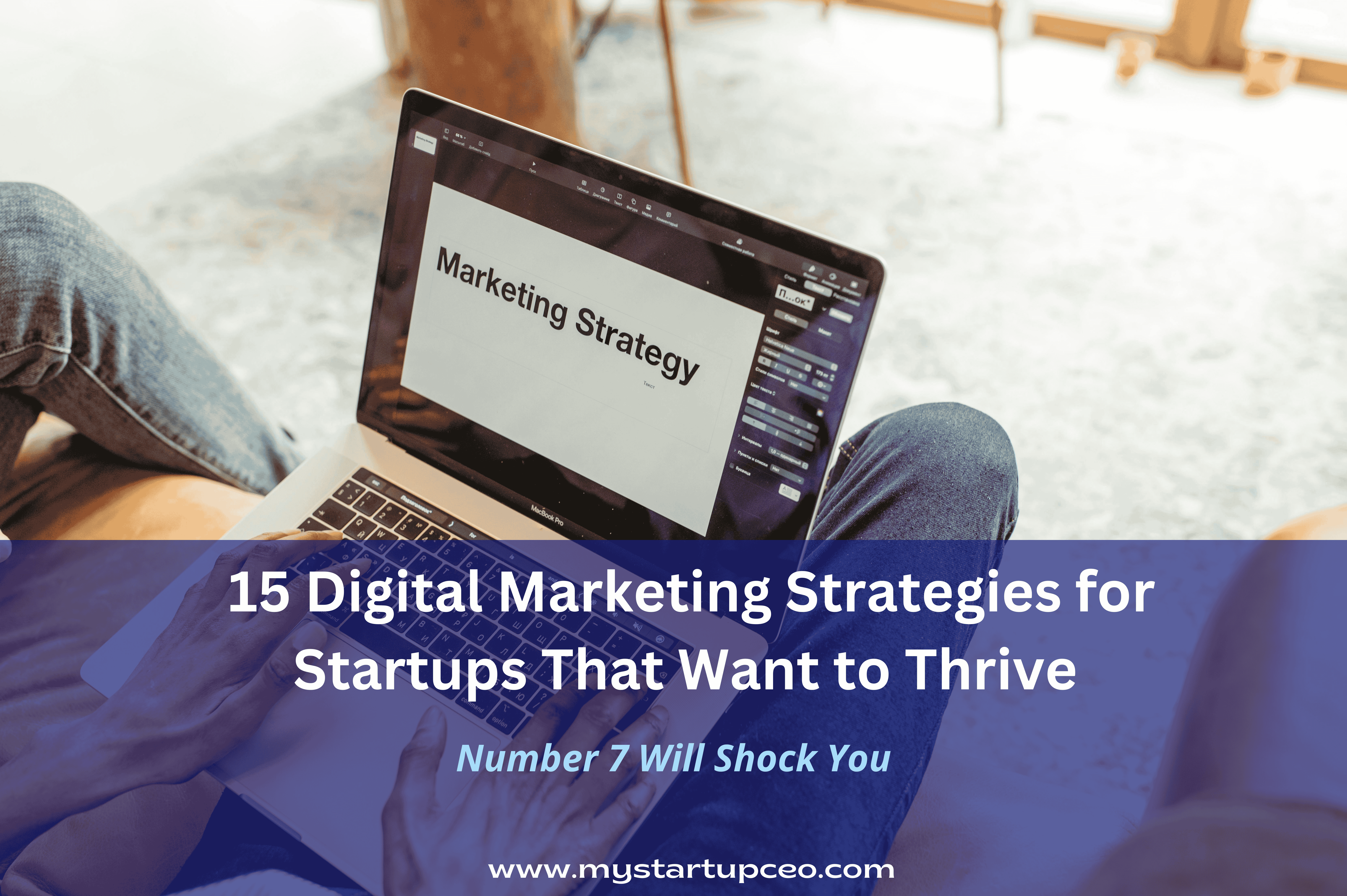My first startup crashed after one year. It was bad enough that I didn’t know any digital marketing strategies for startups to apply, I didn’t even have an online presence.
In fact, it is reported that 10% of all startups fail within the first year.
Running a startup and keeping it afloat is not easy. Keeping it profitable is a different ball game altogether. Thankfully, it doesn’t have to be herculean anymore if you know what to do.
To keep your startup afloat and profitable, you need to take your marketing game a bit more seriously.
That’s why I wrote this article – to show you what to do to remain in business and in profit.
If you can implement most of these digital marketing strategies for startups, you will be setting your startup up for long-term success.
In this article, we’ll explore strategies like creating an online presence, retargeting ads, and leveraging CRM tools to stay connected with customers, among others.
Each of the strategies is very practical. I added a useful pro tip with an example to help you understand and implement.
Whether you’re a small business looking to expand online, or an established startup aiming to innovate, there’s something here for you.
I compiled these digital marketing strategies for startups based on three main criteria:
-
Quick Results
You are a startup, and you don’t want to implement anything that will take forever to deliver results. Isn’t it?
The strategies we’re going to discuss below are easy to set up and deploy.
-
Affordable
Small businesses and most startups, generally, are not in positions to implement solutions that need heaps of money. Some strategies on this list will cost your startup nothing.
-
Adaptable
The strategies you implement today should be flexible enough to cater to future needs.
Customers’ buying behavior has changed significantly since the 2020 pandemic, and experts believe these behavioral changes are here to stay.
So these digital marketing strategies will not only help to keep you afloat, but will set you up for growth and success in the long-term.
Let’s dive in and explore these innovative business strategies!
1. Create an Online Presence
If your business doesn’t have a website, now is the time to make the leap. People are shopping online more than ever, and having an easy-to-use, professional website is essential.

Platforms like Shopify or Wix make setting up an online store simple, even if you’re not tech-savvy.
Pro Tip: Add a blog or resources section to engage visitors and improve your site’s visibility in search engines.
Expanding your website with a blog allows you to showcase expertise, answer common questions, and attract organic traffic.
For example, a bakery could share recipes or tips on baking at home to attract food enthusiasts.
2. Make Use of CRM and Email Marketing
You can’t talk about digital marketing strategies for startups without talking about email marketing.
If paid advertising is out of reach, email marketing can be a cost-effective way to stay connected with your customers.
Use your CRM to segment your audience and send targeted campaigns to re-engage your existing customers.
Pro Tip: Tools like Mailchimp or HubSpot offer free plans for small businesses to get started.

Use the automation features in these tools to send welcome emails, product recommendations, or abandoned cart reminders.
This will help to keep your brand top-of-mind and drive repeat business.
3. Listen to Your Customers
Customer preferences are shifting rapidly.
Use tools like Google Forms or Typeform to conduct surveys to help you understand their changing needs.

Use social media to keep the conversation going. The more you post relevant content, photos, and videos, the more engaged you’ll keep your customers, and the more trust you’ll build.
Pro Tip: Engage customers with polls or Q&A sessions on Instagram Stories.

Ask actionable questions like, “What new products or services would you like us to offer?” or “What’s one thing we could improve?”
These interactive tools not only gather feedback but also boost engagement rates. For instance, a bookstore could ask followers what genres they’d like to see more of and adapt inventory accordingly.
4. Use PPC Ads
PPC ads on platforms like Google, Facebook, or Instagram can drive traffic to your website and generate leads quickly.
Start small with a limited budget to test what works best for your audience.
Pro Tip: Use geo-targeting to focus on customers in your local area if you run a brick-and-mortar business.
This strategy ensures your ads reach people who are most likely to visit your store, maximizing ROI.
For example, if you are a florist, you could target ads to users within a 10-mile radius for Valentine’s Day promotions.
5. Leverage Online Video Sessions
From fitness classes to cooking tutorials, online video sessions are a great way to stay connected with your audience.
Platforms like Zoom, YouTube, or Facebook Live make it easy to host and share your sessions.
Pro Tip: Promote your videos ahead of time on social media to maximize attendance.

Credit: Canva
Share teasers, countdowns, or behind-the-scenes clips to build anticipation.
If you are a yoga instructor, for instance, you could create a short video that explains the benefits of your upcoming session.
6. Promote Items in Demand
Focus on products or services that are relevant to current customer needs.
Your goal is to increase your sales as quickly as possible. And this can only happen if you are offering things that are highly in demand.
Essentials like home office supplies, fitness equipment, or DIY kits are more likely to attract buyers no matter what the season.
Pro Tip: Highlight your best-selling items in email campaigns or on your homepage.
Use banners or featured sections on your site to draw attention.
For instance, an electronics store could spotlight webcams and headphones as remote work essentials.
7. Collaborate with Other Businesses
One of the best ways to reduce your expenditure and increase the chances of more sales is by collaborating with potential partners
Partner with other startups working in your area to offer value-added packages to customers.
For example, a coffee shop could team up with a bakery to offer combined delivery packages just like 200 Degrees Coffee did with Birds Bakery as seen below.

Some organizations that won’t be able to lend a helping hand in terms of financial help can offer free-of-cost advice, consultation, or data analysis services too.
Pro Tip: Use LinkedIn to connect with potential collaborators in your area. Post collaboration proposals and network in relevant groups. A fashion boutique could partner with a jewelry brand to create complementary bundles.
8. Focus on Retargeting

Retargeting ads remind people who visited your site to come back and complete their purchase.
You can use easy retargeting options offered by platforms like Google Ads or Facebook Ads.
Pro Tip: Retargeting works by using cookies to track visitors to your site and show them relevant ads later.
For example, a home goods store could target users who abandoned their cart with an ad saying, “Your perfect sofa is waiting for you! Get 10% off if you complete your purchase today.”
9. Promote Gift Cards and Vouchers
Gift cards can provide an immediate cash boost while encouraging future sales. Promote them through your website and social media channels.
Pro Tip: Partner with local influencers to spread the word about your gift cards. Influencers can showcase how your gift cards make great holiday or birthday presents.
A spa, for instance, could have an influencer share a video about their relaxing treatments.
10. Diversify Your Business Model
Think outside the box to find new revenue streams. For example, a restaurant could sell meal prep kits, or a retail store could host virtual shopping events.
Pro Tip: Experiment with subscription boxes for recurring revenue.
Create themed boxes tailored to customer interests, like “movie night snacks” or “seasonal decor.” A stationery store could offer monthly curated packages of notebooks, pens, and creative supplies.
11. Offer Flexible Delivery Options
Provide curbside pickup, home delivery, or even subscription services for your products. These options make it easier for customers to shop with you.
Pro Tip: Partner with local delivery services to streamline logistics.
Use third-party services like Uber Eats or DoorDash for quick delivery solutions. A restaurant could also offer a pre-order system for curbside pickups during busy hours.
12. Invest in Virtual Showrooms
If you sell high-value items like cars or jewelry, a virtual showroom can make a big difference. Use tools like Matterport or simple video walkthroughs to showcase your products online.
Pro Tip: Include interactive features like live chats to answer customer questions in real-time. This personal touch can address concerns instantly.
For example, a car dealership could use live chats to guide customers through financing options.
13. Use Data to Make Informed Decisions
Tools like Google Analytics, Google Trends, or social media insights can help you identify customer preferences and trending products.
Pro Tip: Regularly review your data to spot new opportunities or adjust your strategy. Set a weekly schedule to analyze website traffic and sales trends.
A clothing brand could identify which products perform best in specific regions and adjust inventory accordingly.
14. Automate Customer Interactions
Automation tools like chatbots or autoresponders can save time and improve customer experience. Use them to handle FAQs or send personalized follow-ups.

Pro Tip: Free tools like Tidio or Facebook Messenger bots are great for beginners.
Start small with basic automation, like answering FAQs or confirming order statuses.
A pizza shop could use a chatbot to let customers track delivery times.
15. Take Advantage of Free Online Tools
From project management apps like Trello to free design tools like Canva, there are countless resources to help your business operate more efficiently.
Pro Tip: Check out Google Workspace for free collaboration and productivity tools. Use tools like Google Docs for team collaboration or Google Meet for virtual meetings. A freelance agency could organize projects and communicate seamlessly with remote teams.
Conclusion
Every small business faces unique challenges, but adapting to change is the key to survival and growth.
By implementing these digital marketing strategies for startups, you can stay connected with your customers, find new revenue streams, and set yourself up for long-term success.
Standout strategies like creating an online presence or focusing on retargeting can make a huge difference in how your business navigates the competitive landscape.
Take it one step at a time, and don’t hesitate to experiment with innovative business strategies that suit your specific needs. Remember, the best time to adapt is now!








